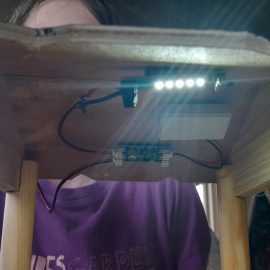
Taking our budget into account, Solar Stu has suggested one “410 Wp” panel for our purposes. It is so tempting just to say “Yes, you’re the expert, let’s go for that”, given that we are once again scratching our heads faced with another abbreviation we don’t’ know the meaning of. What on earth is a ‘Wp’? We resist the temptation; we are here to learn and to take responsibility for our surroundings. Off we go, wandering around the Internet looking for answers again.
‘Wp’ we discover, stands for ‘Watt-peak’ – the maximum electrical power the panel is capable of producing under ideal conditions. That is, it’s the most watts we’re going to get in an hour when the sun is high in the sky, it’s a warm day (25 degrees Celsius) and the sky is clear.
We get philosophical. Life is a wonderful, miraculous thing but run through with uncertainty. In fact, one of the only things you can be certain of is that conditions are virtually never ideal. What does this mean for our solar installation?
Fifteen minutes later we know that instead of watt-peak measurement under ideal (or ‘standard test’) conditions (abbreviated ‘STC’) we should be interested in the watt-peak under ‘Nominal Module Operating Temperature’ (NMOT). For various reasons to do with how the test is carried out, the latter comes closer to the peak power under real world conditions. Happily, the data sheet for the suggested panel includes that figure: 310 watts. That’s about 75% of the STC and a quick scan around blogs, sites promoting green energy use and manufacturer information sheets shows that this is a fairly typical drop when moving from ideal to real world conditions. Good.
Hang on, we feel none the wiser. How are we to apply that information to the specific conditions on our site? What are the specific conditions on our site? The Mentors spend some time wishing for a time machine, which would send us back in time to last year to do an observational study of weather and how the sun moves across the site at different times of the year. Following that fruitless, though amusing effort, we return to learning from the global community of green energy enthusiasts.
There’s a simple formula to calculate annual power yield for Oxford, hurrah! It’s this:
Local (‘kK’) factor x kWp (your NMOT watt-peak in kilowatts)
The kK factor for Oxford is 984 and our Wp in kilowatts is 310/1000 = 0.310 kW. This gives an annual yield of…
984 x 0.310 kW = 305.04 kW
…for our system. However, there are other factors to take into consideration. The roof isn’t quite south facing and the angle of the roof is not quite the 35 degrees recommended for this locality. To be safe, following some helpful tables we found on the internet, we drop the estimated yield to 93%, giving 284.022 kW per year as the final figure.
If conditions were the same every week of the year, our panel would be capable of putting 5.462 kW into our battery each week. That’s over 5,000 watts over 168 hours, giving an average input of 29 watts per hour! (Yes we do know the sun doesn’t shine in the night.) Given our average hourly consumption will be 5-ish watts (our 827 Wh weekly consumption divided by the number of hours in a week), surely that’s enough wiggle room to account for murky weather and winter gloom?
When in doubt, triangulate. There is another question the answer to which could help us become confident that the panel we can afford is big enough. It’s this: “At NMOT, how long will it take for our panel to put in enough energy to cover our weekly consumption?” That’s a very easy calculation:
Consumption (Wh) / NMOT (Wp) = Hours of charging required
For us, this means:
827 Wh / 310 Wp = 2.67 hours
In other words, we just need one sunny afternoon a week? Because on a good day our panel can deliver all the electricity we need in just 2 hours 40 minutes?
Our panel sounds amazing. OK, only living with the system will bring any kind of certainty about how it meets our needs, but we feel we can give Solar Stu the thumbs up. The order goes in.
Meanwhile, the roof has arrived…

